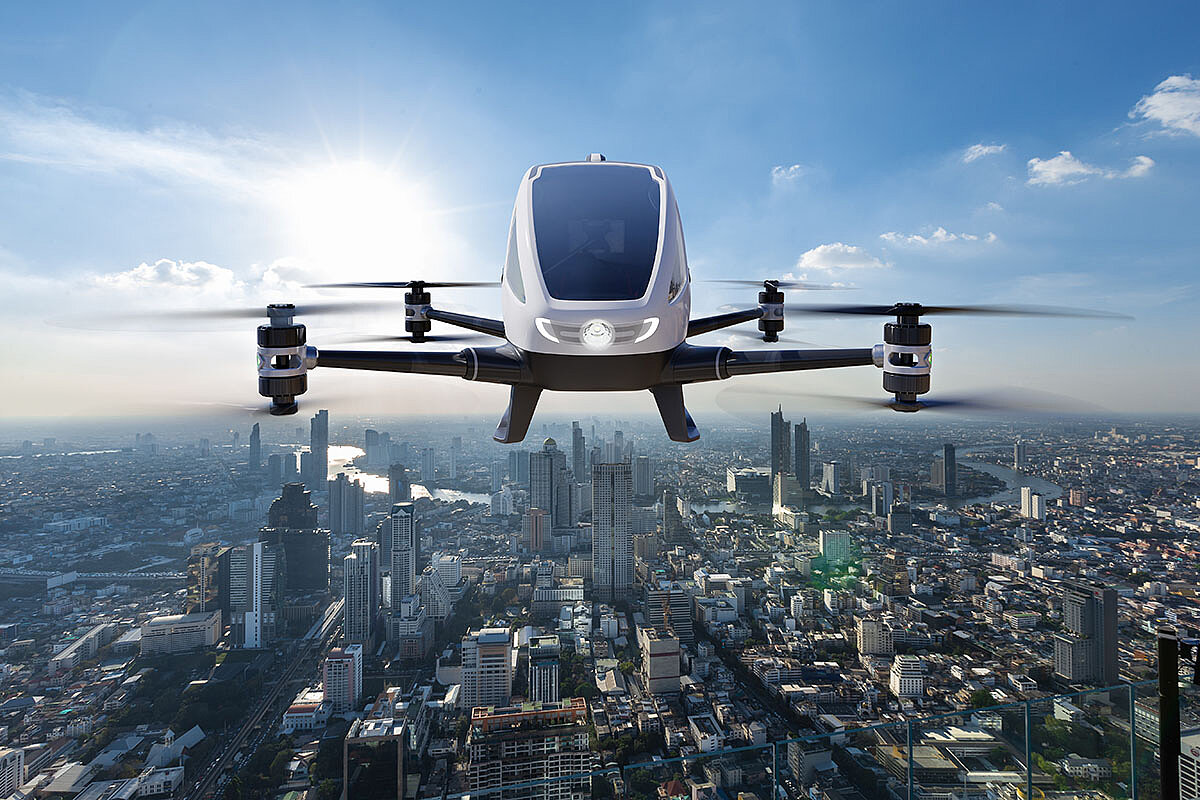Air taxis - the mobility of tomorrow

Flying taxis that autonomously take passengers from A to B are a not too distant form of new mobility. Apart from the legal framework, not much is missing for the release of this short-haul air traffic. An important aspect is safe thermal management; from the cooling of the high-performance engines and the batteries to the cabin air conditioning, there are still quite a few hurdles to overcome. With the help of engineering calculations, these questions can often be answered in detail and in a timely manner.
The fact that simulation technologies can provide important assistance for the design, optimisation and even testing of products is no longer up for debate. Rather, especially in innovative product areas, such as future autonomous mobility, it is a matter of significantly supporting new technologies with new methods and concepts. As in the case of autonomous air taxis, which are to be used in cities and short distances.
In aviation, the lightest possible design is required, as energy must be applied for each kg of weight in order to put it into a hovering state and to accelerate it.
In particular, the electric motors used have a very high power density for this reason, i.e. there is a risk of local overheating. Likewise, the lithium-ion battery cells must be optimally tempered with minimal weight in order to safely deliver their performance and to be able to be charged as often as possible.
Thermal management of the electric motors, power electronics and battery stacks is therefore even more demanding than in electric vehicles due to the high power density of all components.
Hotspots, i.e. local locations with excessive temperatures, must be avoided as far as possible by using suitable cooling concepts. In addition, different environmental conditions have an influence on the cooling system and on the amount of heat to be dissipated.
Engineering simulations allow all the effects described to be carried out in real time on corresponding virtual models. Rough design deficiencies can thus be quickly identified. But also details for precise adjustments, which are often not or only with difficulty apparent via real tests, can provide valuable insights and findings via their digital twin. Whether it is a car or an air taxi, whether the energy for the electric drives is stored in a battery or generated from a hydrogen tank via a fuel cell; these future-oriented technologies are needed. The development cycles can not only be shortened, but also noticeably refined and improved using simulation technologies.
"For innovative products, it is also one of our tasks to question the existing. Laws of nature are laws of nature. But new technologies and new markets also offer physically new framework conditions and possibilities. By means of engineering simulation calculations, these can often be recognised earlier and, even more importantly, their mode of operation can be tested on the computer, even before they are built. This often offers our customers a clear advantage - in terms of time, technology and economy," says Stefan Merkle, Managing Director of Merkle & Partner GbR.
Further information at: www.merkle-partner.de
(3,336 characters)

